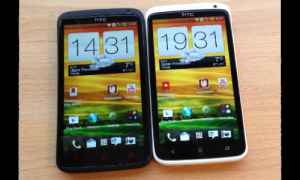It is raining budget tablets in the Indian market and almost every player, big or small seems to have an offering in this segment. Unfortunately, not every budget tablet has actually delivered what it has promised. All of which made us just a little apprehensive when we tried out the Zen Tab 708B, one of the three devices Zen Focus has released in the Indian market. So how does it fare against some very stiff competition and does it deliver where many others have failed?
LOOKS: HEY, SMARTY!
As far as looks are concerned, the tablet is surprisingly good to look at. It comes with a 7.0-inch large display with the camera placed on the left of the screen. While one of the sides of the device is plain, the other houses a 3.5mm audio jack, USB slot, memory card slot and speakers. When held horizontally, the top has a power on/off key along with the volume rocker and home keys. The best part about design of the tablet is that it looks sleek with the width measuring merely 8.5mm - a rarity in this price segment. In fact, in terms of looks, we would go so far as to say that we hardly get to see such a sleek device in this price category. Even the build is impressive and solid, very unlike what we get to see in this budget segment. Well, on the flip side, the glossy surface of the tablet attracts fingerprints, but whatever it looks, it sure does not look cheap.
HARDWARE: PRETTY GOOD TOO
There are plenty of devices that manage to look good but fail to impress in terms of hardware. But the Zen Tab backs up its decent looks with some very reasonable hardware as well. It is powered by a Boxchip A13 1.2 GHz processor, and for better graphics quality, there is a Mali 400 Graphic processor. Both combine to deliver good Web browsing and decent app performance as long as one does not venture too deep into HD territory. On the memory front, the device comes with 512 MB RAM and internal storage of 4 GB, which can be expanded to 32 GB using an external memory card. On the connectivity front, it comes with Wi-Fi, but has no place for a SIM card. However, you can get 3G speeds via a USB data dongle using the USB port, which incidentally can also be used to connect to a keyboard or a mouse (the sales pack includes a USB connector. Very thoughtful.
SOFTWARE: BUDGET FUN
The tablet runs on Android 4.0, Ice Cream Sandwich, and the manufacturers have opted to leave the interface relatively untampered. The device has five home screens which can be spruced up with widgets and shortcuts as per your convenience. So you can add as well as delete widgets and shortcuts on these screens. However, unlike other budget tablets, this one does not come stacked with preloaded applications and games. In fact, one almost gets the impression of an app scarcity when he first explores the device, as there are very few apps visible. The device offers Flash as well as HTML 5.0 support, making it great for browsing on.
MULTIMEDIA: FEATURE PACKED
The tablet packs in a VGA camera for photography and video chatting. The quality of pictures taken by the camera is nothing to rave about but then what could one expect from a VGA camera? The camera is capable of shooting videos too, the quality of which again is passable rather than exceptional. However, in a pleasant surprise, the device is capable of playing HD video and comes pre-installed with a HD music player. Music quality is good on loudspeaker as well as earphone. Speaking of which, the quality of the headphones supplied with the device is rather good. So, the tablet scores on the viewing and listening stakes, although it does lag on the shooting ones. That said, not many people take pictures with tablets, do they?
USER EXPERIENCE: QUITE ACCEPTABLE
The Zen Tab is an entry level budget tablet that is capable of handling most routine tasks and does so without burning a hole in your pocket. The tablet is not just sleek but also offers good build quality, and comes packed with what we thought was decent hardware for its price point.
Yes, we would have liked to have some more preloaded apps on the device, but then what is the Android Play store for? As far as the battery backup is concerned, the 2,350 mAh battery in the device works well enough to surpass what the company promises to give. As per the company’s claims the device can work for up to 3.5 hours without needing a recharge. However, the device easily lasted for longer than that when we used it - we are not complaining one bit.
Yes, we would have liked to have some more preloaded apps on the device, but then what is the Android Play store for? As far as the battery backup is concerned, the 2,350 mAh battery in the device works well enough to surpass what the company promises to give. As per the company’s claims the device can work for up to 3.5 hours without needing a recharge. However, the device easily lasted for longer than that when we used it - we are not complaining one bit.












